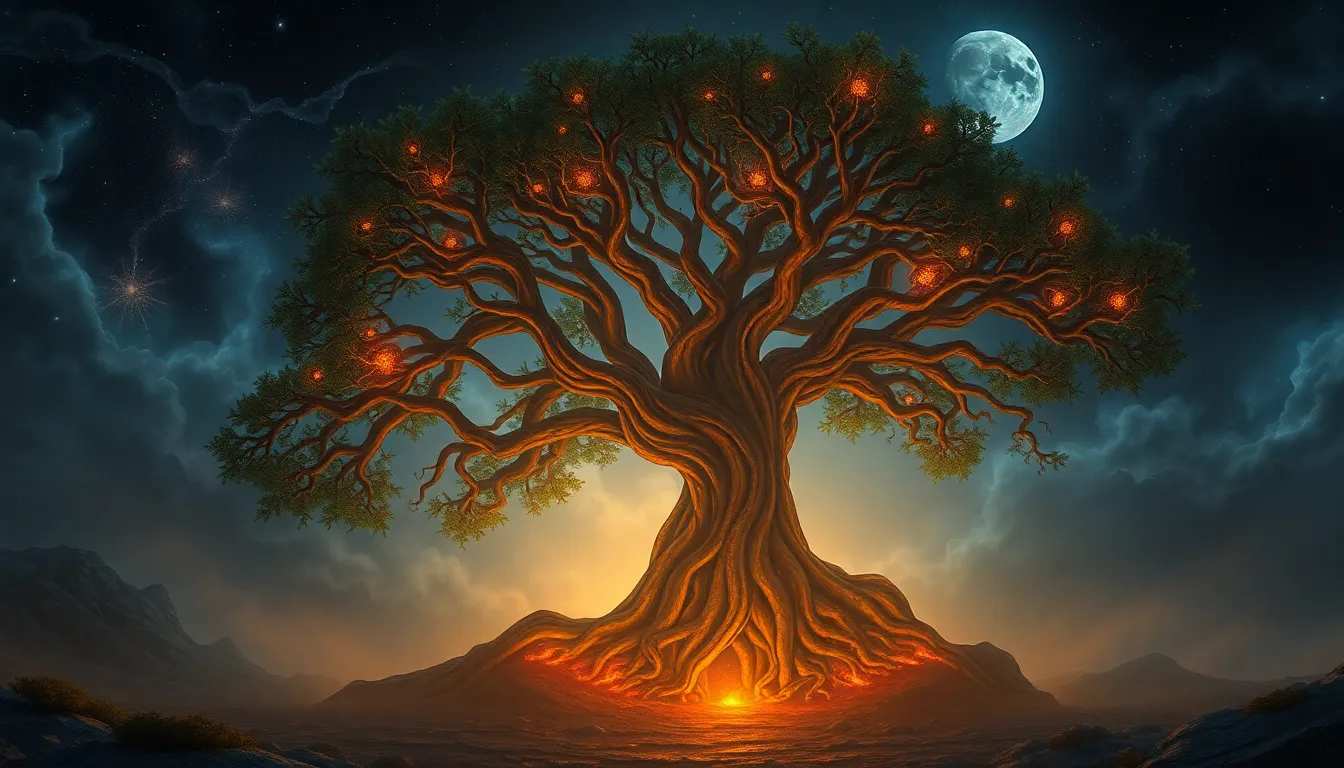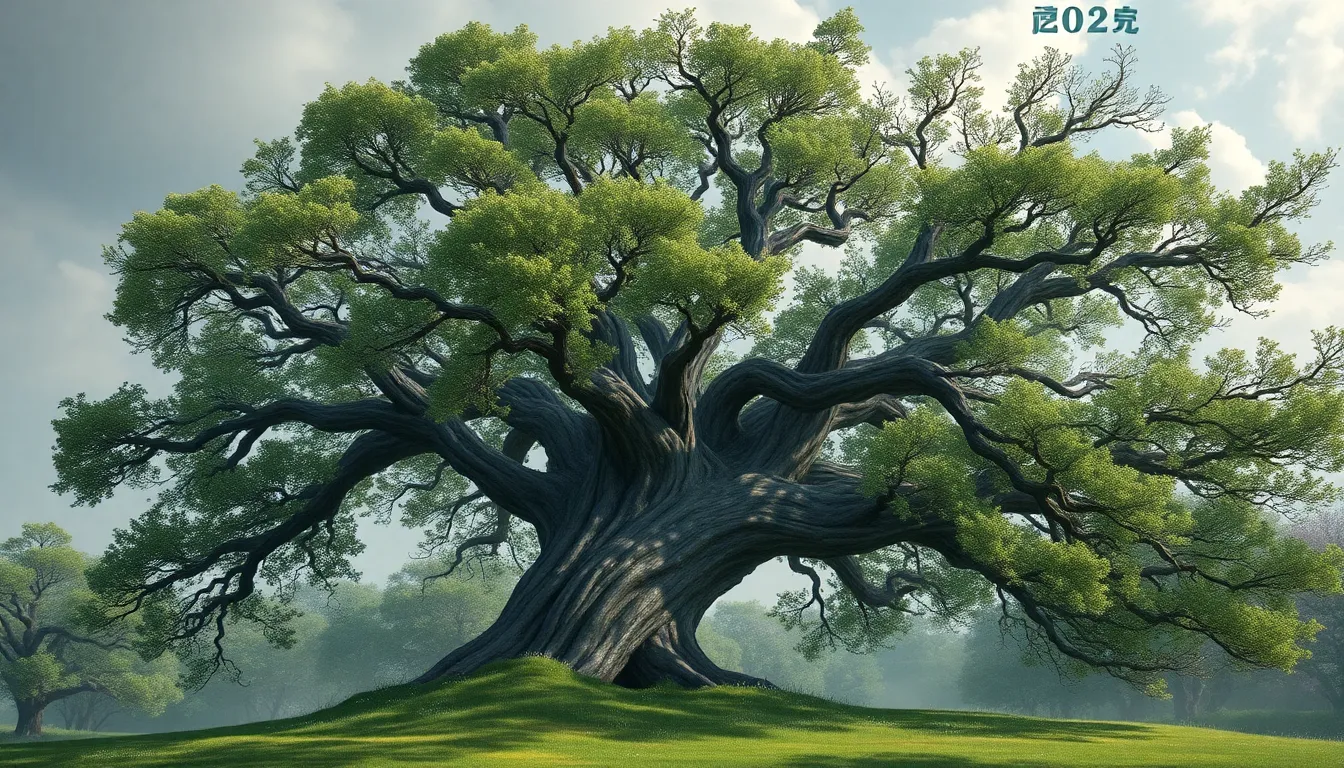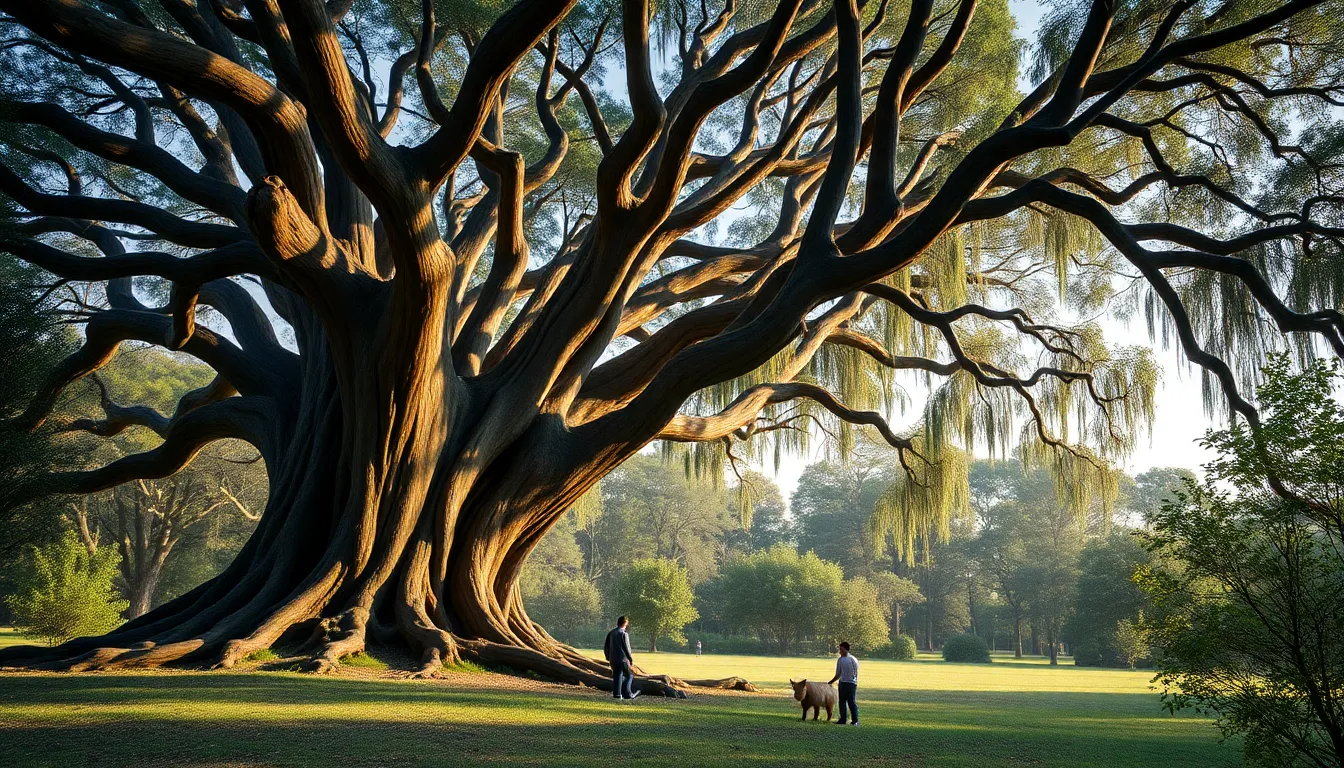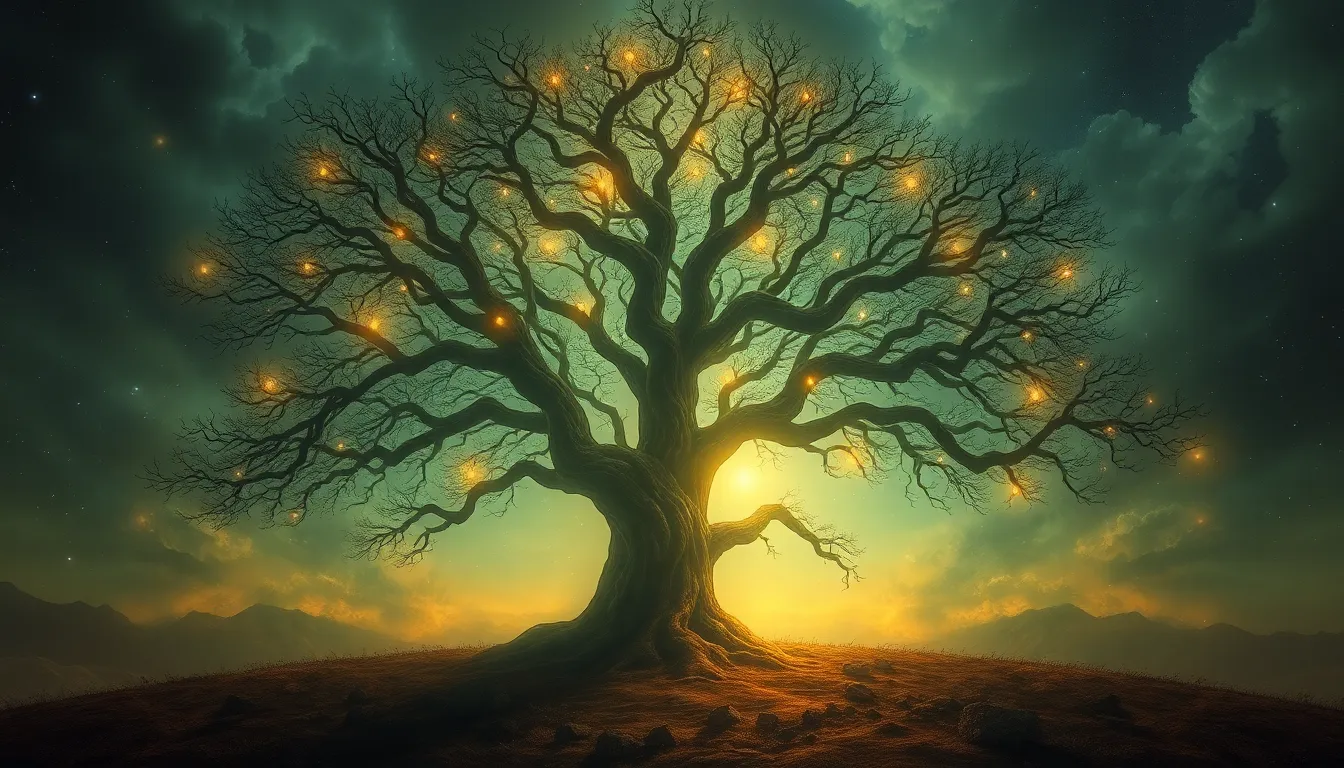The Tree of the Underworld: Myths of Connection to the Afterlife
I. Introduction
The Tree of the Underworld is a powerful symbol found in various mythologies, representing the connection between the living and the dead. This concept serves as a bridge between life and the afterlife, reflecting the beliefs and cultural practices surrounding death and rebirth.
Across different cultures, the Tree of the Underworld holds significant meaning, often embodying themes of transformation and continuity. It serves not only as a physical representation of life’s cycle but also as a metaphorical link to the spiritual realm.
This article aims to explore the myths surrounding the Tree of the Underworld, examining how different cultures perceive its role in connecting the living with the afterlife.
II. Historical Background of Underworld Myths
A. The role of trees in ancient mythology
Trees have played a critical role in ancient mythology, symbolizing growth, wisdom, and the interconnectedness of all life. They are often seen as sacred entities that provide shelter, sustenance, and spiritual guidance.
B. Overview of the concept of the underworld in different cultures
The underworld, often viewed as a realm of the dead, varies significantly across cultures. Some traditions view it as a place of punishment, while others see it as a resting ground or a realm of rebirth. For instance:
- In Greek mythology, Hades is a place of both reward and punishment.
- In Egyptian beliefs, the afterlife is a journey through the Duat, leading to judgment.
- In many Indigenous cultures, the afterlife is a continuation of life on Earth, often viewed positively.
C. The symbolism of trees in relation to life, death, and rebirth
Trees symbolize the cycle of life and death, with their roots representing the past, their trunk the present, and their branches the future. This cyclical nature parallels various mythological narratives about the afterlife and rebirth, reinforcing the idea that death is not an end but a transformation.
III. The Tree of Life vs. The Tree of the Underworld
A. Comparison of the Tree of Life and its counterpart
The Tree of Life often symbolizes growth, vitality, and the interconnectedness of all beings. In contrast, the Tree of the Underworld symbolizes death, transition, and the connection to the afterlife. While the former celebrates life, the latter acknowledges the inevitability of death.
B. Symbolic meanings in different traditions
In many traditions, these two trees serve as dualities:
- Tree of Life: Represents nourishment, life force, and continuity.
- Tree of the Underworld: Represents decay, the afterlife, and the unknown.
C. How these trees represent different aspects of existence
These trees encapsulate the human experience, depicting the balance between life and death, joy and sorrow, existence and oblivion. They remind us that both life and death are essential components of the same cycle.
IV. Notable Cultural Representations
A. The World Tree in Norse mythology (Yggdrasil)
Yggdrasil, often referred to as the World Tree, is a central figure in Norse mythology. It connects the nine realms, including Asgard (the realm of the gods) and Hel (the realm of the dead). Yggdrasil represents the interconnectedness of life, death, and the cosmos.
B. The Olive Tree in Greek mythology and Hades
In Greek mythology, the olive tree is sacred to Athena and symbolizes peace and prosperity. It also has ties to the afterlife, as olive branches were used to symbolize peace and reconciliation for the souls in Hades.
C. The Ashvattha in Hindu cosmology and its ties to the afterlife
The Ashvattha tree, also known as the sacred fig or peepal tree, is significant in Hinduism. It symbolizes the cycle of life, death, and rebirth (samsara). Its roots are said to represent the material world, while its branches symbolize the spiritual realm.
V. The Tree of Souls in Indigenous Cultures
A. Significance of trees in Native American beliefs
In many Native American cultures, trees are revered as sacred beings that connect the earth and sky. They are often seen as ancestors, carrying the wisdom of the past and providing guidance to the living.
B. The role of the World Tree in Mesoamerican traditions
In Mesoamerican traditions, the World Tree, or Ceiba tree, serves as a cosmic axis connecting the underworld, earth, and heavens. It represents the journey of the soul and the cycle of life and death.
C. Connection to ancestors and the spiritual realm
Indigenous cultures often view trees as a way to connect with ancestors, believing that their spirits reside within the trees. This connection fosters a deep respect for nature and the understanding that life continues after death.
VI. The Tree in Literature and Art
A. Depictions of the Tree of the Underworld in literature
Literary works often portray the Tree of the Underworld as a significant symbol of death and passage. For instance, in Dante’s “Inferno,” the dark forest represents the journey through sin and the path to redemption.
B. Artistic interpretations in visual arts
Artists have used the imagery of the Tree of the Underworld to explore themes of life, death, and transformation. Paintings and sculptures often depict trees with roots reaching down into darkness, symbolizing the connection to the afterlife.
C. How these representations convey deeper meanings about death and the afterlife
Through literature and art, the Tree of the Underworld serves as a reminder of our mortality and the mysteries of the afterlife, encouraging reflection on our existence and connections to those who have passed.
VII. Modern Interpretations and Spiritual Practices
A. Contemporary beliefs surrounding the Tree of the Underworld
In modern spirituality, the Tree of the Underworld continues to be a symbol of connection to the afterlife. Many people view trees as sacred spaces for meditation, reflection, and communication with deceased loved ones.
B. Rituals and practices that invoke connection to the afterlife
Various rituals involve trees, such as:
- Planting trees in memory of loved ones.
- Using tree branches in ceremonies to honor ancestors.
- Creating altars with tree symbols during rituals to connect with the spiritual realm.
C. Influence of modern spirituality on ancient myths
Modern interpretations often merge ancient myths with contemporary beliefs, allowing individuals to find personal meaning in the symbolism of the Tree of the Underworld. This syncretism enriches the understanding of these ancient symbols.
VIII. Psychological and Philosophical Perspectives
A. The tree as a symbol of human connection to mortality
The Tree of the Underworld serves as a poignant reminder of human mortality, prompting individuals to confront their fears and beliefs about death. It encourages a deeper appreciation of life and the connections we share.
B. Analysis of the afterlife beliefs and their impact on mental health
Beliefs about the afterlife can significantly affect mental health. Understanding death as a transition rather than an end can provide comfort and reduce anxiety surrounding mortality.
C. Philosophical implications of the Tree of the Underworld
The Tree of the Underworld raises philosophical questions about existence, identity, and the nature of reality. It encourages exploration of what it means to live and die, fostering a deeper understanding of the human experience.
IX. The Tree of the Underworld in Popular Culture
A. Representation in films, books, and games
In contemporary media, the Tree of the Underworld appears in various forms, from fantasy novels to video games. It often symbolizes the journey through death and the search for meaning.
B. How modern storytelling incorporates ancient myths
Modern storytellers frequently draw upon ancient myths to enrich their narratives, utilizing the symbolism of the Tree of the Underworld to explore complex themes related to death and the afterlife.



